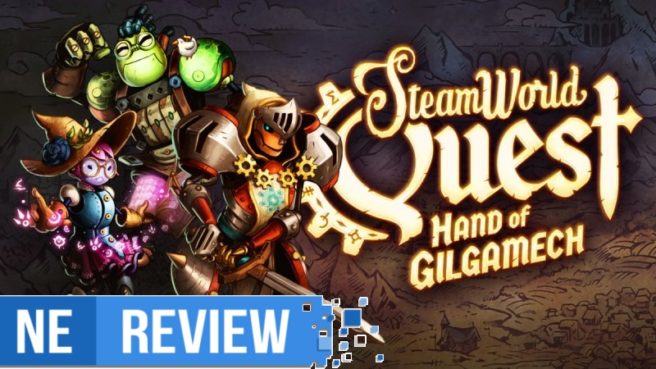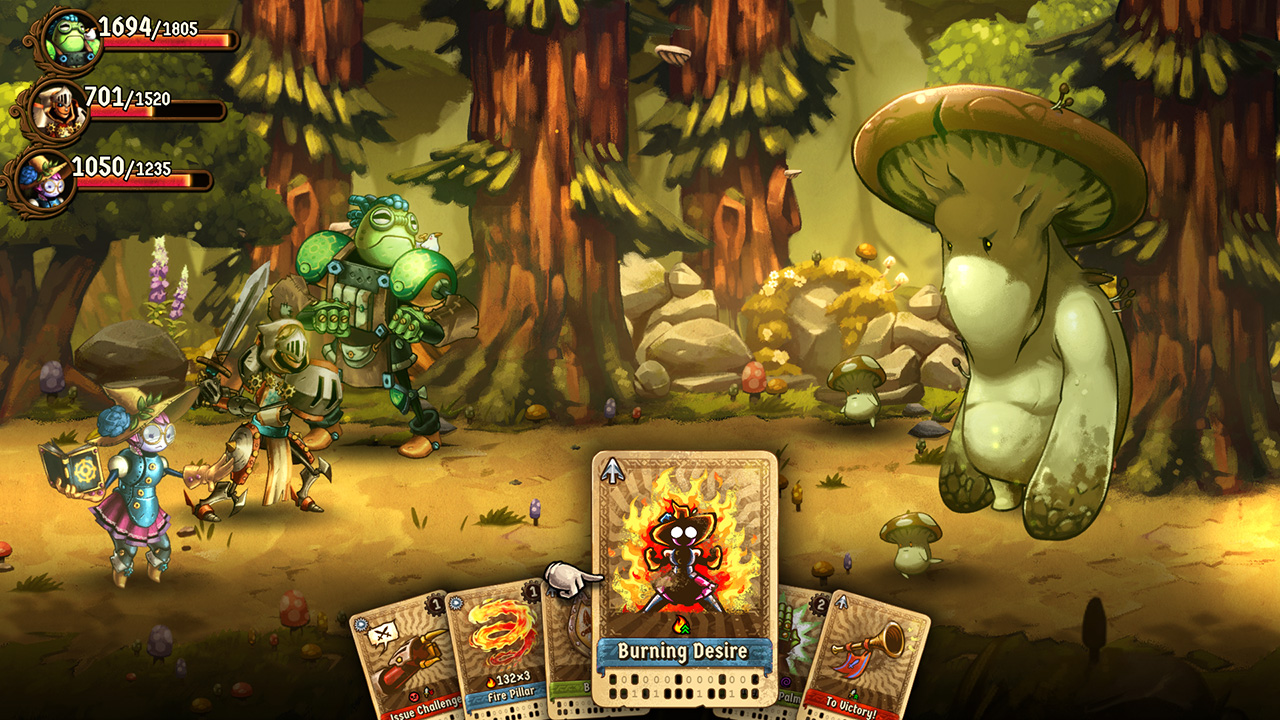[Review] SteamWorld Quest: Hand of Gilgamech
System: Switch (eShop)
Release date: April 25, 2019
Developer: Image & Form
Publisher: Thunderful
The SteamWorld franchise has to be one of the most ambitious and varied IPs in indie gaming today. Since its inception on DSiWare in 2010, the series has stretched from Metroidvania platformers to tower defense games to real-time strategy, and with SteamWorld Quest, the latest entry on Switch, they’ve made the natural progression to the card-based RPG genre. But of course, we have to wonder: does Image & Form have another ace up its sleeve with SteamWorld Quest? Let’s shuffle our deck and see what hand the game has dealt us.
SteamWorld Quest is set in a fairytale world of magic and fantasy mixed with the series’ signature brand of steampunk style. It’s a unique world where knights, dragons, robots, and steam-driven machinery brush shoulders with one another. To match with this idyllic setting, SteamWorld Quest tells an appropriately simplistic story. It’s the tale of a ragtag group of friends – Armilly the eager hero-to-be, Copernica the alchemist in training, and Galleo the reclusive craftsman. Their regular misadventures in their small village are rudely interrupted when it is raided by an army of soldiers under the service of a mysterious Dark Lord. This attack whirls them into a much larger conflict beyond their village, one that involves the very fate of the world itself. Beyond that, the story doesn’t develop much further. It’s a simple story without many twists or turns, and it plays itself very safe.
Now, there’s nothing wrong with a basic storyline; no matter how complex or simple a story may be, what matters is its execution. Yet narrative and world building are the backbone of any story-driven RPG, and this is where SteamWorld starts to falter. The tale it tells has very little tension to push it forward or keep it engaging. Beyond the occasional reference to a big bad Dark Lord, there rarely ever feels like there’s a genuine threat that our heroes must vanquish. Likewise, its characters, as likable as they are, are all extremely one-note. The vast majority of your party can each be completely summed up in a single sentence – Armilly is the overeager wannabe hero, Copernica is a college dropout who wants to use her knowledge for the good of the many, Galleo is the shy, gentle giant, and so on. The truly frustrating thing is that these characters have potential to be interesting, since most of them have intriguing backstories that could have been used to make them come alive and feel more developed. These potential moments for character development are effectively pushed under the rug until the game’s final acts, when a last-minute attempt at character development is made that ends up feeling like too little, too late. Aside from the wisecracks that filled their many dialogue sequences, there wasn’t much about each character that made them worth being invested in. In an RPG, a genre defined by its characters and storytelling, that’s a serious issue.
That said, despite the lack of meaningful character development, the writing itself is top notch. Dialogue is snappy and filled to the brim with clever one-liners and jokes that rarely made me laugh out loud, but often elicited a chuckle or two. This is a good thing, too, since there is a massive quantity of conversations sprinkled throughout the game’s many chapters. The dialogue never felt like it interrupted the gameplay; in fact, I looked forward to each conversation for the gags, if not for the characters themselves. I was always eager to see what wisecracks the characters could come up with as they traversed their fantastical realm.
And what a beautiful world it is. Each picturesque landscape and dreary dungeon is gorgeously rendered through the game’s brilliant hand drawn visuals. With its painterly backgrounds and colorful character designs, the entire game looks like illustrations from a children’s storybook brought to life. The vibrant art really pops on the Switch’s handheld screen, but even on the TV it still holds up and allows you to see the wonderful amount of little details that went into the game’s presentation. These pleasant graphics are supported by solid performance between both modes as well, although the frame rate occasionally stuttered during particularly intensive attacks. The soundtrack also does a fine job of complementing this colorful world, striking a nice medieval style mixed with some modern instrumentation, even if most of the songs aren’t particularly memorable in their own right. However, I’d be remiss not to mention the incredible boss themes (especially the late game arrangements), which all do a fantastic job at building up tension and excitement with each fight.


